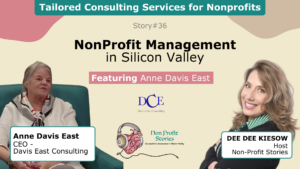
In This Episode:
In today’s episode, we delve into the unique challenges of Silicon Valley’s real estate market. Because of soaring home prices exceeding $1.3 million, we’re facing some of the highest property taxes in California. Adding to the complexity, intricate tax regulations like Proposition 13 and Proposition 19 and capital gains nuances pose significant challenges. Furthermore, a critical housing shortage, with a deficit of over 50,000 homes, intensifies competition and drives up prices. Stay tuned as we explore these pressing issues.
- High Property Taxes: In Silicon Valley, median home prices over $1.3 million significantly burden buyers and sellers with increased property tax.
- Complex Tax Regulations: California’s intricate tax laws, like Proposition 13 and Proposition 19, capital gains tax complexities, challenge buyers and sellers.
- Limited Housing Supply: Silicon Valley is grappling with a critical housing shortage, with a reported deficit of over 50,000 homes.
“There's no bigger challenge than we have in Silicon Valley, and really for California in general, it is the lack of housing affordability."
Larry Stone
About Larry Stone:
Larry Stone is a prominent figure in Silicon Valley, serving as the County Assessor of Santa Clara for almost three decades. His extensive career in public service, starting in 1995, has established him as a pivotal influencer in the region’s real estate and economic sectors. Stone’s expertise extends beyond his role in the Santa Clara County Assessor’s Office; he is also recognized for his background in financial management and real estate development. These skills have significantly contributed to Silicon Valley’s dynamic growth and transformation. His commitment to public service is further exemplified by his innovative approaches in government and real estate. Stone’s educational background from the University of Washington, complements his multifaceted career. His involvement with local organizations, like the San Jose Rotary and San Jose Sports Authority, underscores his dedication to the local community, making him a well-rounded and respected professional.
"When I was experienced through real estate after I got transferred out to San Francisco, I found real estate much more tangible.”
Larry Stone
Show Notes:
- Introduction to Expert: Introduction to Larry, a seasoned professional who transitioned from Wall Street financial management to real estate in the Bay Area, sharing insights on market trends and property valuation.
- Larry’s Career Journey: Larry discusses his early career on Wall Street, his move to real estate in San Francisco, and the appeal of tangible assets in real estate compared to stocks and bonds.
- Impact of Silicon Valley’s Evolution: Exploration of how Silicon Valley’s shift from a military-industrial base to a technology hub influenced real estate trends, including the transformation of land use and property types.
- Property Value Assessment: A detailed overview of how property values are assessed in the Bay Area, highlighting the influence of market conditions, ownership changes, and new construction on property valuation.
- Effect of Prop 13 on Property Values and Taxes: An in-depth discussion of California’s Proposition 13 and its significant impact on property taxes and value assessments, including its limitations and the disparity it creates.
- Challenges in Silicon Valley’s Real Estate Market: Larry addresses the current challenges in Silicon Valley’s real estate, focusing on the lack of affordable housing and the effects of remote working on commercial properties.
- Affordable Housing Solutions: A comprehensive analysis of the affordable housing crisis in Silicon Valley, covering various aspects from homelessness to workforce housing and the political challenges involved.
- Real Estate Trends and Predictions: Larry offers insights into the future of Silicon Valley’s real estate market, considering technological advancements, market dynamics, and changing consumer preferences.
- Title and Escrow in Real Estate: An exploration of the role and importance of title companies and escrow processes in property transactions, emphasizing security and neutrality.
- Common Issues in Property Transactions: Discussion of typical challenges in property transactions, including title discrepancies, liens, and the implications of a cloud on title.
- Importance of Title Insurance: An overview of why title insurance is essential for property buyers, covering potential legal disputes and claims against the property.
"Silicon Valley transitioned from being a military-industrial area to a hub for high-tech startups. This transition was significant even before the area was named Silicon Valley."
Larry Stone
Episode Transcription
So, Larry, what inspired your shift from Wall Street financial management to real estate in the Bay Area?
When I got out of graduate school, I was recruited to go back to Wall Street to work. I was 22 years old. And I liked it there, but stocks and bonds were somewhat intangible. You know, you were depending upon somebody else’s management and somebody else’s success. And when I experienced real estate after being transferred to San Francisco, I found real estate much more tangible. You could manage the property yourself. The success was based on what you did and how successful or unsuccessful you were. Based upon somebody else, I guess what’s a good stock or not. And that’s the reason I transitioned from stocks and bonds securities to real estate.
And how has the evolution of Silicon Valley impacted some real estate trends?
When I arrived here, I moved to Sunnyvale and bought my first house for $33,000 and $1,000 down. It was primarily in agricultural and military-industrial developments. Companies like Lockheed and others built military equipment for things like the Naval Air Station in Sunnyvale. As that industry began to grow, technology came about. So we’re talking about technology companies starting to grow. We’re talking about Apple, Intel, and Cisco; they were technology companies that were startups in the ’60s and the ’70s. Will it Packard is another one. And as that industry began to grow away from the military aspects of Silicon Valley, Santa Clara County at the time, even before Silicon Valley, was that term coined. People started moving here. And so it was essentially an agricultural area. There were three agricultural canneries; there were three canneries in Sunnyvale alone. People started moving here, so the developers began tearing up the orchards and buildings. Residential communities, a primarily single-story, single lot on 2000 square-foot homes on a cul-de-sac. And so that’s how this area transitioned. So it came with the real estate and the technology transitioning at about the same time. Later on, of course, there were others like Apple and Google and companies that came on. I would call Apple, Google, and Facebook as second-tier or transitional things. I see. So the basis of Cisco and companies like that were filled in with what I think was initially low technology, and they were transformed into high technology. And that’s when Apple, Google, Facebook, and others transitioned our industrial complex into what we know today as Silicon Valley.
How are property values assessed? and what is its impact on home buyers and sellers?
The assessment is based on the property’s fair market value, whether commercial, residential, or whatever. So, the market determines the assessment, and then we apply the property tax to the value of the evaluation. The two primary components of increasing the assessment role are changes of ownership. People sell their properties with a lower assessed value and then to somebody who buys them at a higher value. The other component is new construction. So we’ve had a lot of new construction in this area almost consistently for the last 20 years. Residential as well as commercial. The difference is that we now have a better mix of residential properties than when we were building tract homes of about the same size on the same size. It’s the same thing with commercials. Initially, commercial property was mainly single-story concrete tilt-ups for high-tech startups. Today, we see multi-story—A sophisticated, complex development in this area. So, transitioning was significant. But understand that it’s the value of the real estate; new construction adds to the value, and changes of ownership add to the value. We’re going through a transition right now, actually in reverse. New construction in Silicon Valley is down almost 50% in new parcels. Changes of ownership are close, being down 50%. That’s all in one year. So we’ve had about nine years of solid, up-into-the-proper growth in Silicon Valley since the Great Recession in 2008 to 2009. We’re beginning to go back into that kind of environment now. Construction costs and interest rates are at record levels, so people aren’t selling their homes, so there are fewer ownership transfers. And people don’t want to sell their homes because they could move into an interest rate that’s maybe two or three times as high as the one they’re in, and construction costs are so high. So home values have stayed up, not because of anything other than no inventory on the market. So we have too many people chasing too few existing homes because there’s a meager inventory.
Well, Prop 13 has also had a significant impact on property values and property taxes. Prop 13 passed in 1978, establishing a limit of no more than 2%. Your existing assessment could only increase a maximum of 2% every year. Mainly, residential real estate has grown much faster than 2%. So, we have this vast disparity between assessed values and market values. And that’s a result of Proposition 13. Because people in 1978 were fed up. In the three to four years before Proposition 13, residential property values increased by almost 80%. Mayors, council members, and governmental agencies were doing their jobs. They were assessing the values based on the market values. The government was not reducing the tax rate consistent with the tremendous increase in estimated values. And so the people got fed up, really fed up, and said… You will stop this and overwhelmingly passed Proposition 13 in 1978. The flaw in the whole thing is the arbitrary 2% cap, which has no relationship to anything. Howard Jarvis and Paul Gann, who passed Proposition 13, added that the increase could only be some percentage of the consumer price index. Seventy percent or 80 percent, you wouldn’t have this tremendous variant now between market values and assessed values.
What are the biggest challenges currently facing the Silicon Valley real estate market?
The lack of supply and affordability of housing is absolutely number one. There’s no more significant challenge than we have in Silicon Valley, and for California in general, the lack of housing affordability. The second is commercial property. Remote working has created significant problems for the development of office and commercial properties, changing the whole real estate development scenario. High-tech companies have cut jobs for over 30,000 employees in the last two years. That’s having a significant impact, and ultimately into the future, with the development of new office space. Let me give you an example. First, during COVID, Boston stopped construction on a 1.1 million square foot high-tech office. Boston Properties stopped construction on a 1.1 million square foot office building in San Jose during COVID. When COVID began to decline, they resumed construction on that same office building. And then when the… the office market started to fall, they stopped construction again. So that building right now is sitting half-built. And it’ll probably be sitting half-built for a while. Google, who was going to begin construction on the whole Google village, the office part of that has been put on hold for, I believe, some time.
What are your thoughts on affordable housing solutions in Silicon Valley?
Well, the definition of affordable housing is comprehensive. So start with homelessness and the lack of affordable housing. Then, there are various gradations of affordable housing and meager income, usually defined as 30% to 40% of the area’s median income. And then there’s affordable housing, which is somewhere in between. Then we move into workforce housing, which is becoming affordable now because of the high cost of residential real estate. So, as far as I understand, there are various definitions of affordable housing. We need it all. In other words, workforce housing, moderate-income housing, is becoming unaffordable. to working people with substantial incomes, but not at the expense of low-income people and, indeed, people experiencing homelessness. People experiencing homelessness are having an economic impact that we can’t ignore. Some try to ignore it, but we can’t ignore the financial implications. So the whole housing spectrum is essential, and they’re problematic in all aspects of all degrees of housing. And politics also affects the affordability of housing.
Everybody seems to need to understand the need for more housing. But it’s the NIMBY-ism, not in my backyard. So, people who strongly favor affordable housing are very much against it in their neighborhoods. And that’s becoming a problem that the anti, the political opposition to housing that our future depends upon. And people don’t make that linkage between their desire to have a consistent neighborhood that will not work for the future of Silicon Valley and our industries. So if we do not solve our housing problem and do it in a relatively short period, then we’re going to see the demise, probably the slow demise. Of Silicon Valley and what it is because people will find companies that will find a way to operate in lower-cost-of-living areas. People will find a way to buy homes to work at those companies in lower-cost industry areas.
And how does the presence of major tech companies affect real estate trends in Silicon Valley?
In Silicon Valley, we have a rather unique residential real estate market. Residential real estate prices in Silicon Valley tend to rise faster during good times to higher levels and fall more quickly during recessions. So there’s a broader gap between success and failure, good times and bad times, with residential real estate in Silicon Valley. Also, in Silicon Valley, the stock market had had, in some cases, a more significant impact than the stock market has a greater impact than interest rates because high-level, high-tech professionals were buying when interest rates were low until recently buying expensive properties, often all cash, not requiring a mortgage. Therefore, the interest rates impacted high-tech professionals purchasing residential real estate less than the interest rates themselves because they were paying all care.
What tips can you offer to the first-time home buyers to navigate this unique real estate market?
The homeowner’s exemption is available for principal residents, reducing their assessment by $7,000 per year once they apply for it and once it’s their principal residence. That saves the homeowner about $70 in property taxes a year. It’s a small amount, but it’s essential. We recognize the importance of homeownership and acknowledge the difficulty of becoming homeowners today.
What is Prop 19, and how has it changed property assessments?
Prop 19 has changed property assessments more significantly than anything since Proposition 13. It’s a very complex proposition. It has two parts that are only vaguely related to each other. A little of the history here. In the 1990s, the Citizens of California passed Proposition 60 and Proposition 90. It allowed homeowners with rare assessed values to transfer that rare assessment to a new home with certain conditions because they’ve owned the home for a long time. But Prop 60 allowed you to do it in any county within the county. Prop 90 allowed you to do it outside the county, but it was by county option. So, only ten counties out of 58 elected to allow Proposition 90 to be transferred into their county. The realtors were very concerned about that limitation. I rest, too; if you’re trying to get grandma closer to the grandkids, why should she be limited to just ten counties? Well, the Realtors put a measure on the ballot in 2018. I think it was called Proposition 15, and it allowed universal Prop 90 transfers. In other words, you could transfer your low assessed value if you’re over the age of 55, that was their limitation, to any county in the state. California said that would cost… a billion dollars a year in lost property tax revenue, and of course, the major benefit of property tax revenue is schools. So the teachers met with the labor unions and said we will put this down. They told the realtors who had already qualified Prop 15 for the ballot that if you try to pass this, we’ll kill it. So, the realtors were stuck because they knew that with the schools behind it, as opposed to it, it would not happen. So it went down, was on the ballot already, and went down about 60-40. So the Reuters had a problem. How to get their main interest in that is a universal transfer along the ship to any county in the state, transferring billions of dollars worth of lost property tax revenue to offset that. So they then looked at Prop 58, which we call the intergenerational transfer, which allows parents to transfer their principal residents and the lowest assessed value to their children. Even before, I mean Proposition parents to transfer their principal residence and their lower assessed value to their child or children. The Realtors said that’s the source of the revenue to make up for the billion dollars lost with the universe of Prop 90. 19, which allowed for the universal transfer of a low assessed value to any county in the state. To make up for the billion dollars lost, they eliminated the ability to transfer your low assessed value to children, except that the child or children had to live in the property. What was happening was that parents were transferring a lower sales value to the children, but the children were living there. So they were turning these properties into renter properties, taking homeownership opportunities after the market. So a classic example was Lloyd Bridges, an actor my age, but he had two sons, Bo and Jeff. Lloyd Bridges had two sons, Bear Bridges and Jeff Bridges, both famous in the Hollywood set. had a home in Malibu on the ocean, with panoramic views of the Pacific Ocean and access to the beach, and he transferred that property to his sons, Bo and Jeff Bridges, on his death. They rented the property immediately. They didn’t want him to live there. So they were renting it for $16,000 a month, but because they had a shallow assessment, they were paying $5,000 a year in property taxes. And so that’s where the revenue came from to make up for the revenue lost on the universal Prop 90 transfers. That is now being challenged by those folks who would like to have that ability back your principal residence again to your child or children. Not weak. They’re trying to eliminate the requirement that the child or children live in it. Theoretically, you could have a home transferred from generation to generation. So maybe in 2050, you may have a property with a 1975 tax base. People like me think that that’s not fair, that somehow transferring the family home is a good idea to maintain the family home in the family, but not to turn these properties one after another into rental properties, which eliminates and lowers the ability for home ownership. Yeah. Is that good? Yeah, that was good. It’s not popular, but it’s good. I know. Do you want to mention homeowner or homeowner exemption? So now, with Prop 19, you have to live there. And the way that you prove that is through the owner’s exception. Prop 19 also requires that it be your principal residence. And the way you prove that to Prop 19, the way you prove that for Prop 19 the way you prove that for Prop 19 is that you have to show that it’s your principal residence. So many of these changes are all based upon the principal residence, and you have to show and demonstrate. that it is your principal residence. Where you get your mail, where you’re registered to vote, where you come home at night after work, all of those things have to be established to prove that the property we’re talking about being transferred is your principal residence.
What is your vision for the future of real estate in Santa Clara County?
It’s all about housing. We will work our way through Silicon Valley’s commercial ups and downs. Still, if we don’t solve the housing problem and do it reasonably quickly, we will see a gradual demise of economic activity in Silicon Valley. More housing. More intense housing, more multi-family housing, and more variety of housing for different income levels. We’ve got to maintain a spectrum of housing availability. So I mentioned that from homelessness to meager income to low income to moderate to worker housing, all of those aspects of housing are essential for our prosperous future of Silicon Valley. The rest of it will work itself out, deal with the housing problem significantly for all income levels from homelessness to, you know, housing for high-tech executives. It will have a significant negative impact on our future.
What emerging trends do you see or foresee in the real estate markets of Silicon Valley?
Well, I think the property tax will be impacted more significantly for a more extended period in the retail sector. Online retail is growing exponentially faster than brick-and-mortar stores, and the whole concept of online retailing is changing—The brick-and-mortar aspects of shopping centers. So I think that will see the biggest, lasting significant change. Retailers have to adapt to that. So far, high-end retail malls are doing quite well as we come out of the COVID recession. Low-end malls are not so much. Strip centers in suburban areas are doing better than some of the significant malls as people change where they live and where they shop. Again, the transition of people working more remotely, spending more time at home than they don’t. So, I think strip centers seem to be doing quite well. Major malls aren’t. I mean, a French company, which is the principal owner, a French company owns Oak Ridge Malls and Valley Fair. They’re the largest owner of malls in the world. Announced last year, they’re divesting themselves of all malls in the United States within the next five years. Yeah, but you have some long-term versus short-term trends. You have the property transfer new parcels down.
What has been your most valuable lesson throughout your real estate career?
If you purchase or develop quality real estate, you should maintain and manage it well. Over time, time is the factor here; over time, you should be successful. But a lot of things are not developed well; they are not managed well, they are not constructed well. And that’s the kind of property that you see. And, of course, leverage. All the significant downturns and recessions in real estate markets are over-leveraging. And the Great Recession was a perfect example of that. People could borrow 100% of the home that they were buying. Well, any economist will tell you that that’s impossible to maintain—The SNL debacle in the early 1990s. I was in the business back then. The same thing was happening except with commercial properties. People were overleveraging, getting appraisals before they bought the property for more money. The property was appraised for more money than they were buying it for. That’s a recipe for financial disaster. It happened in the early 1990s—the dot com bust related to that, the Great Recession, and the COVID recession. I’ve been through four or five significant downturns or what we would call recessions in my career. And it’s usually because people are over-leveraging property, not building it right or maintaining it strictly. But over time, You can make money in the real estate markets if you do it correctly.
What is great California Exodus, and what impact, if any, will it have on the real estate market?
Well, I think it’s grossly overrated. California’s population is declining. But it’s not a crisis. It might be a concerning trend. But between 2020 and 2023, 600,000 Californians moved out of the state. New Californians came into the state. That’s a net loss of $300,000, $300,000 population plus. That’s less than 1% of our state with 40 million people. What is disturbing about that statistic is that those fleeing the state to Texas, Arizona, and places like that took $29 billion of taxable income with them. That’s a 30% reduction in the lost revenue lost income to the state of California. That is concerning. For most of the 50,000 residents, San Jose lost 50,000 residents since 2020, dropping San Jose from the 10th largest city in the country to the 12th largest city in the country. Significant, yes. A crisis, no. There are many reasons why you lose population, certainly. But it’s not just people fleeing to Texas, Arizona, Florida, or wherever—a decrease in births. Significant births are down significantly. California has the lowest birth weight. It’s at a lower. The birth weight in California has an all-time low. Reduced immigration has impacted California substantially. The rise in deaths, many of them COVID-related. And fewer people simply coming to California than there used to be. So where did these 300,000 people go? Where did the people go that left the state? They visited Texas, Arizona, Nevada, Idaho, Washington, and Oregon. And where did these new Californians come from? Well, Texas, Arizona, Nevada, Washington, and New York. The number two in migration of people into California is New York. So that will tell you something about Silicon Valley’s strength and draw. So, is it a crisis? No. Is it a concerning trend? I think so. Possibly, at least, the trend is so. But the demise of Silicon Valley, what’s been named the doom loop, you know, particularly for apathists, well, the doom loop, I think, is turned into a loop to loop. It’s simply not. We ought to be seriously concerned about this, but we ought to watch the trend significantly. Only four major companies have left California for other states. But the workforce largely hasn’t followed. Tesla is still building automobiles in Fremont and leasing buildings here. In the last year, Tesla has released two 300,000-square-foot buildings, one in Palo Alto and one in North San Jose. Essentially, the loss of companies is because the management wants to live in Texas, where they don’t have an income tax or things like that. But people aren’t only four companies; four major companies have left the state, and essentially, their employees haven’t followed. That’s a significant indication that this is not a crisis but a concerning trend.
- Connect on Facebook
- Connect on LinkedIn
- Connect on YouTube
- Email: assessor@asr.sccgov.org
- Call/Text: (408) 299-5500
Watch or Listen to all Episodes
on any Podcast Platform:
on any Podcast Platform:
Sharad Gupta
"As we explore the vibrant world of real estate, let's embrace learning as our most valuable tool in making wise and forward-thinking decisions."
Sharad Gupta



